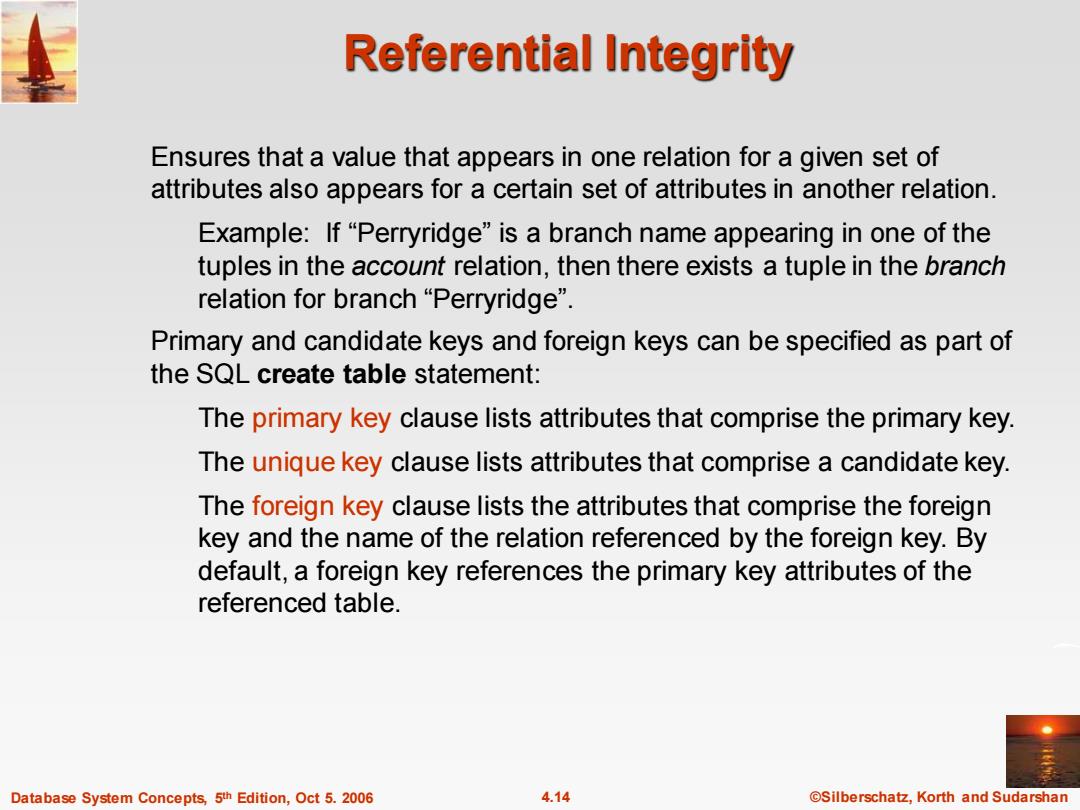正在加载图片...

Referential Integrity Ensures that a value that appears in one relation for a given set of attributes also appears for a certain set of attributes in another relation. Example:If "Perryridge"is a branch name appearing in one of the tuples in the account relation,then there exists a tuple in the branch relation for branch "Perryridge". Primary and candidate keys and foreign keys can be specified as part of the SQL create table statement: The primary key clause lists attributes that comprise the primary key The unique key clause lists attributes that comprise a candidate key. The foreign key clause lists the attributes that comprise the foreign key and the name of the relation referenced by the foreign key.By default,a foreign key references the primary key attributes of the referenced table. Database System Concepts,5th Edition,Oct 5.2006 4.14 Silberschatz,Korth and SudarshanDatabase System Concepts, 5th Edition, Oct 5. 2006 4.14 ©Silberschatz, Korth and Sudarshan Referential Integrity Ensures that a value that appears in one relation for a given set of attributes also appears for a certain set of attributes in another relation. Example: If “Perryridge” is a branch name appearing in one of the tuples in the account relation, then there exists a tuple in the branch relation for branch “Perryridge”. Primary and candidate keys and foreign keys can be specified as part of the SQL create table statement: The primary key clause lists attributes that comprise the primary key. The unique key clause lists attributes that comprise a candidate key. The foreign key clause lists the attributes that comprise the foreign key and the name of the relation referenced by the foreign key. By default, a foreign key references the primary key attributes of the referenced table